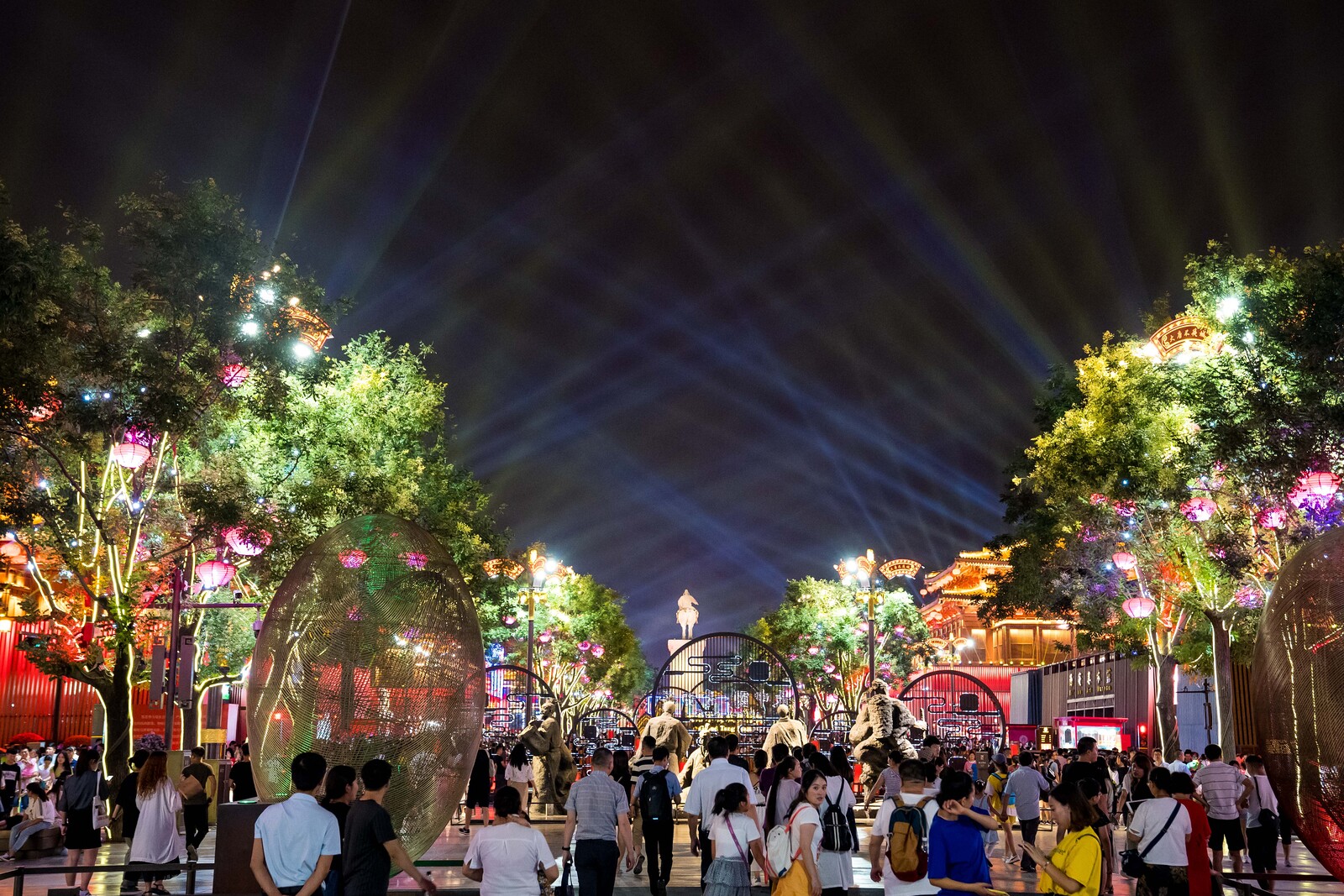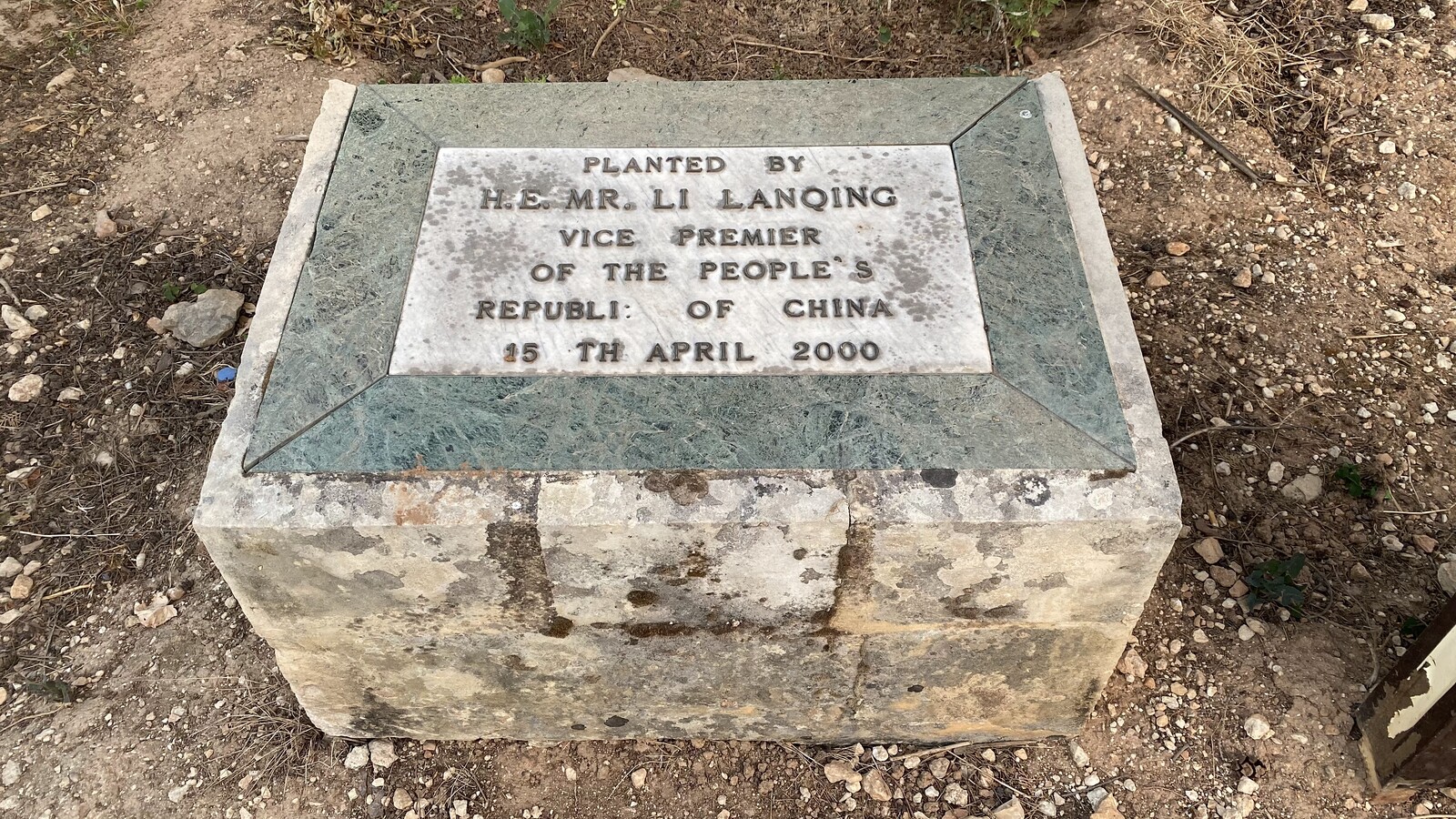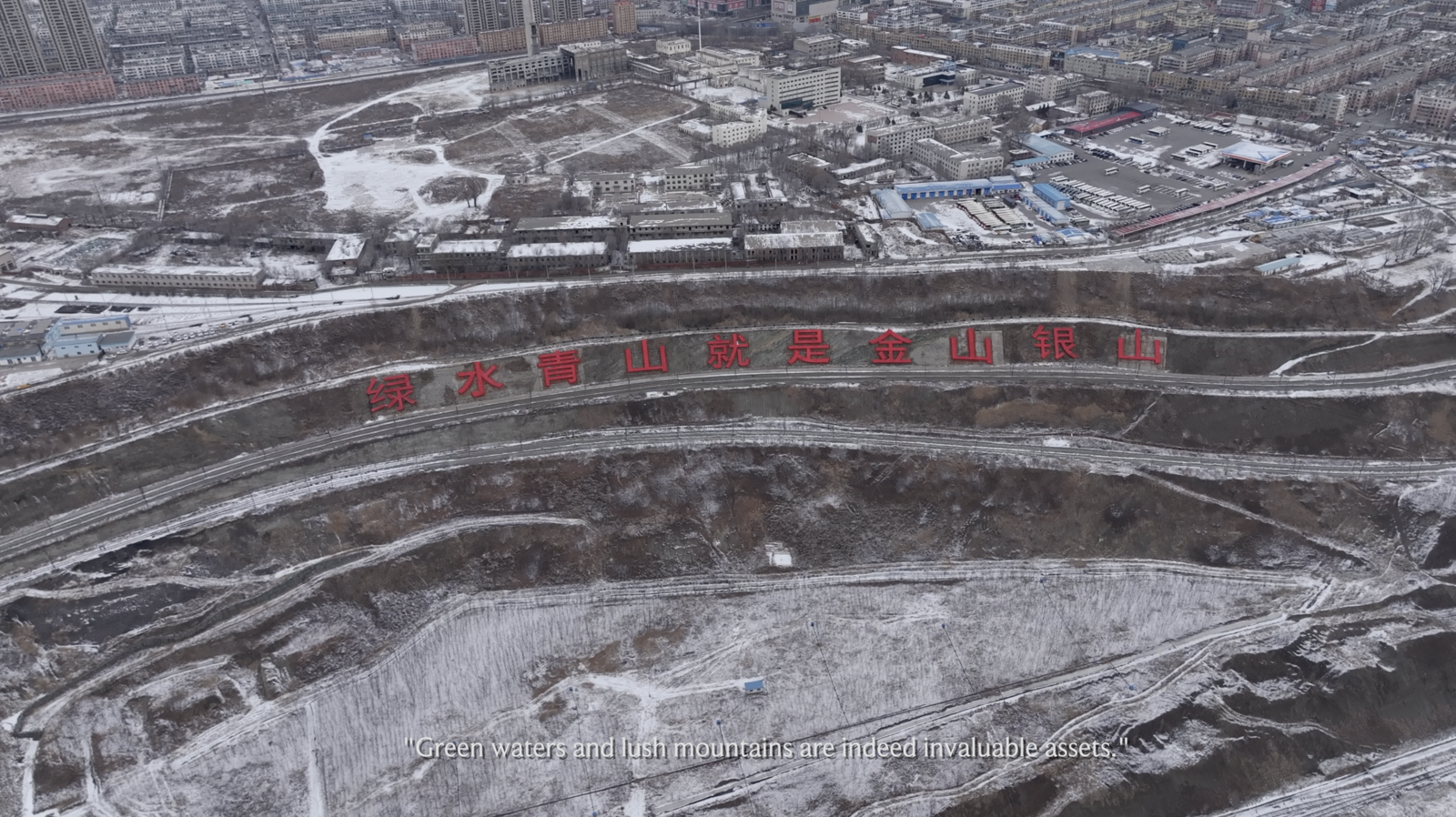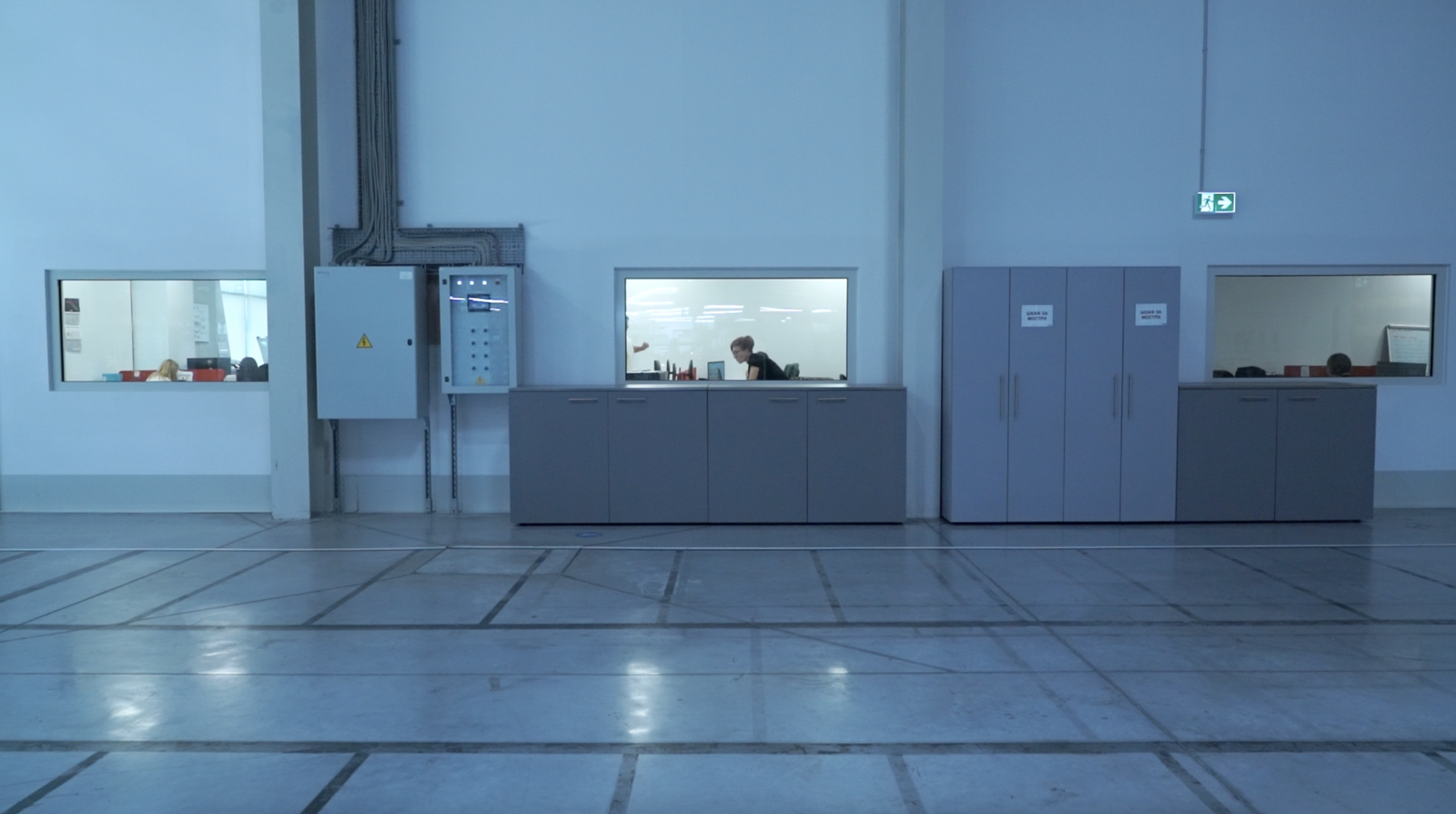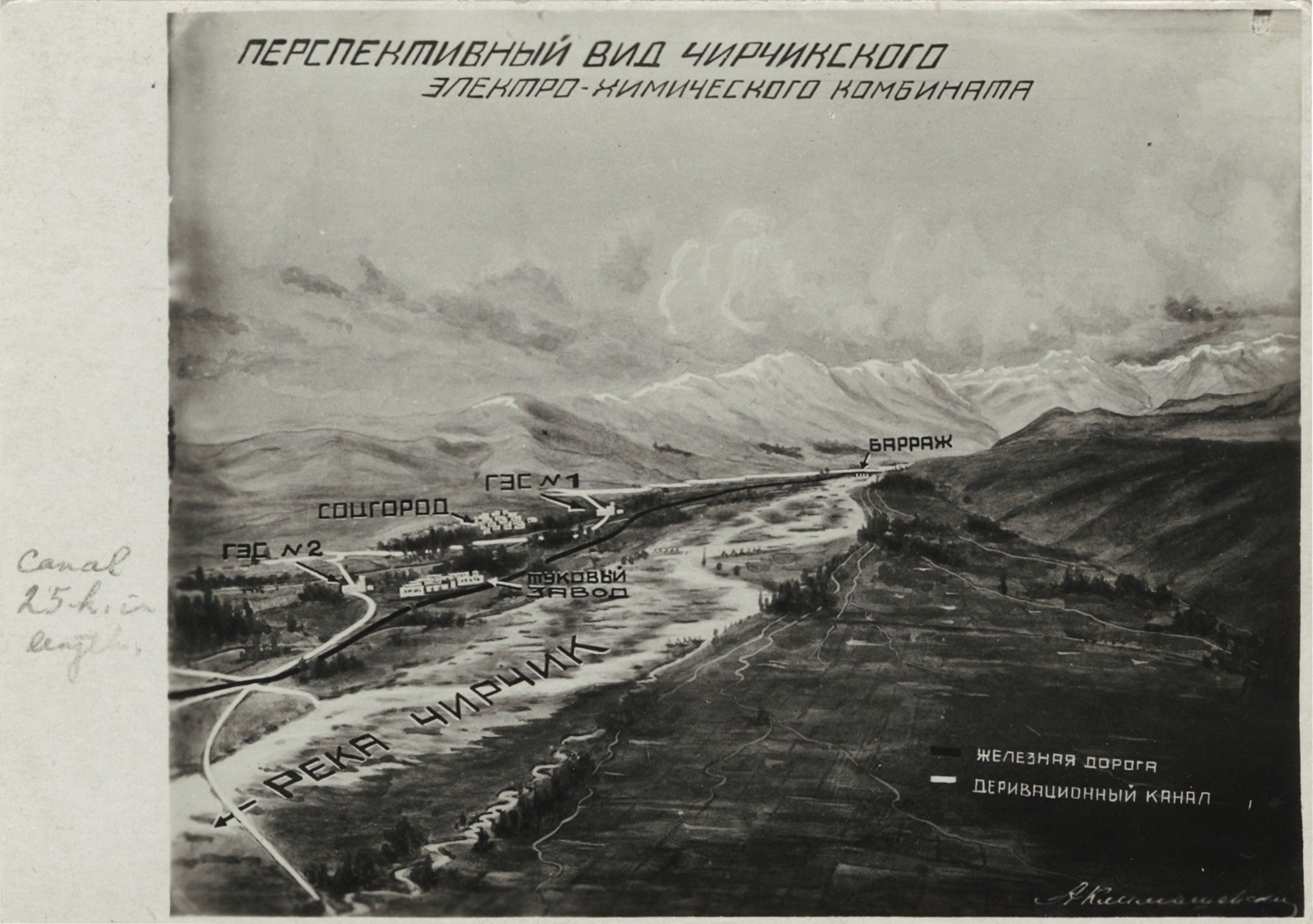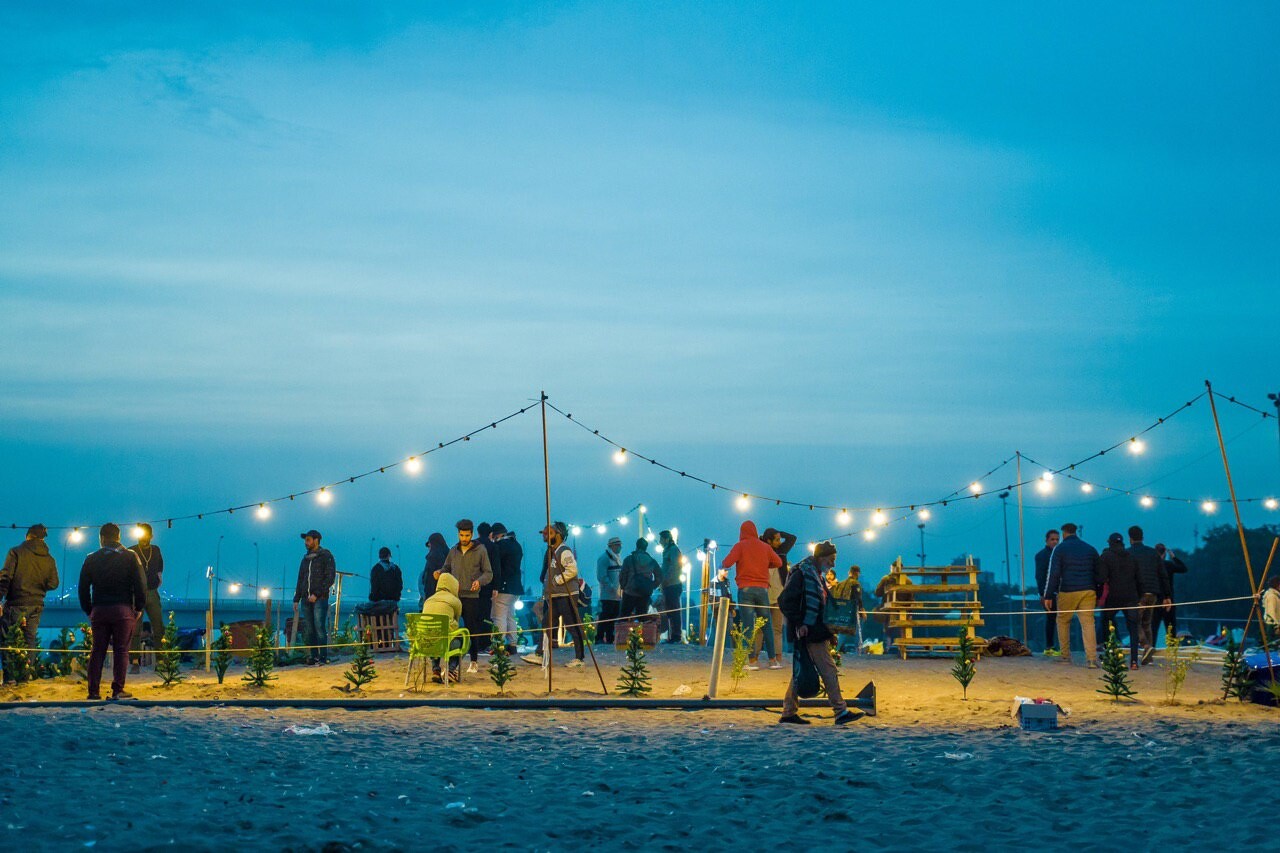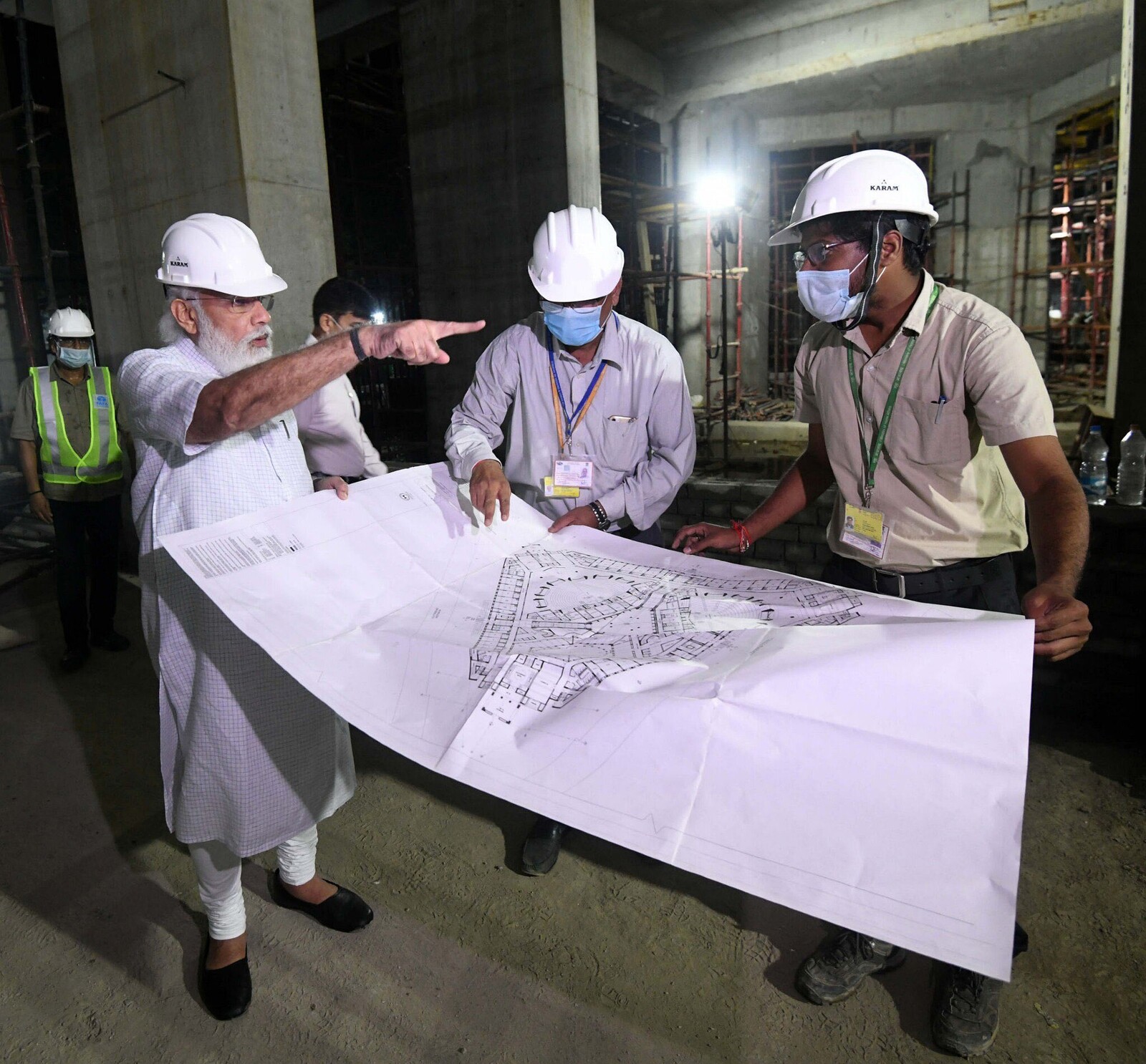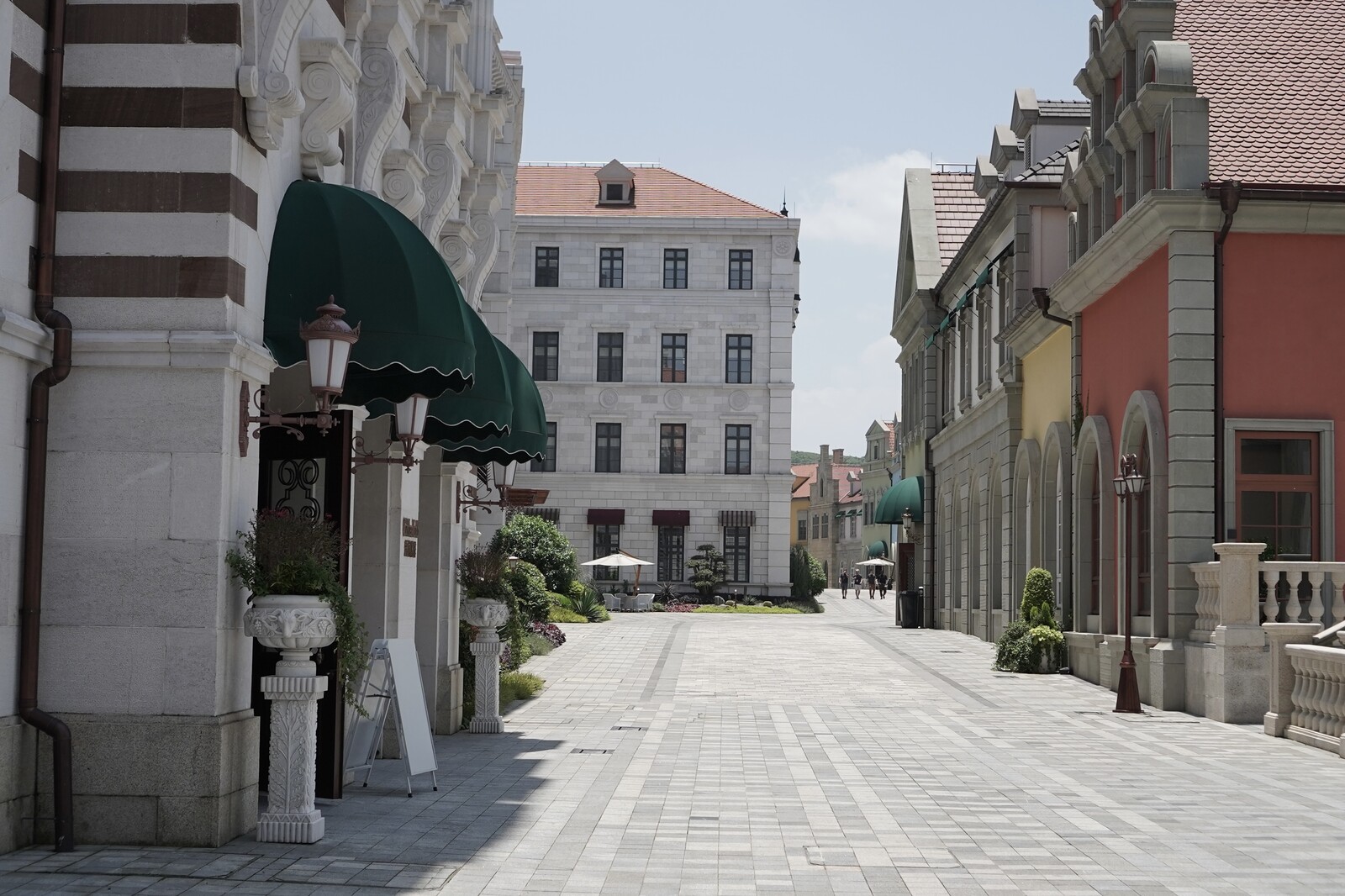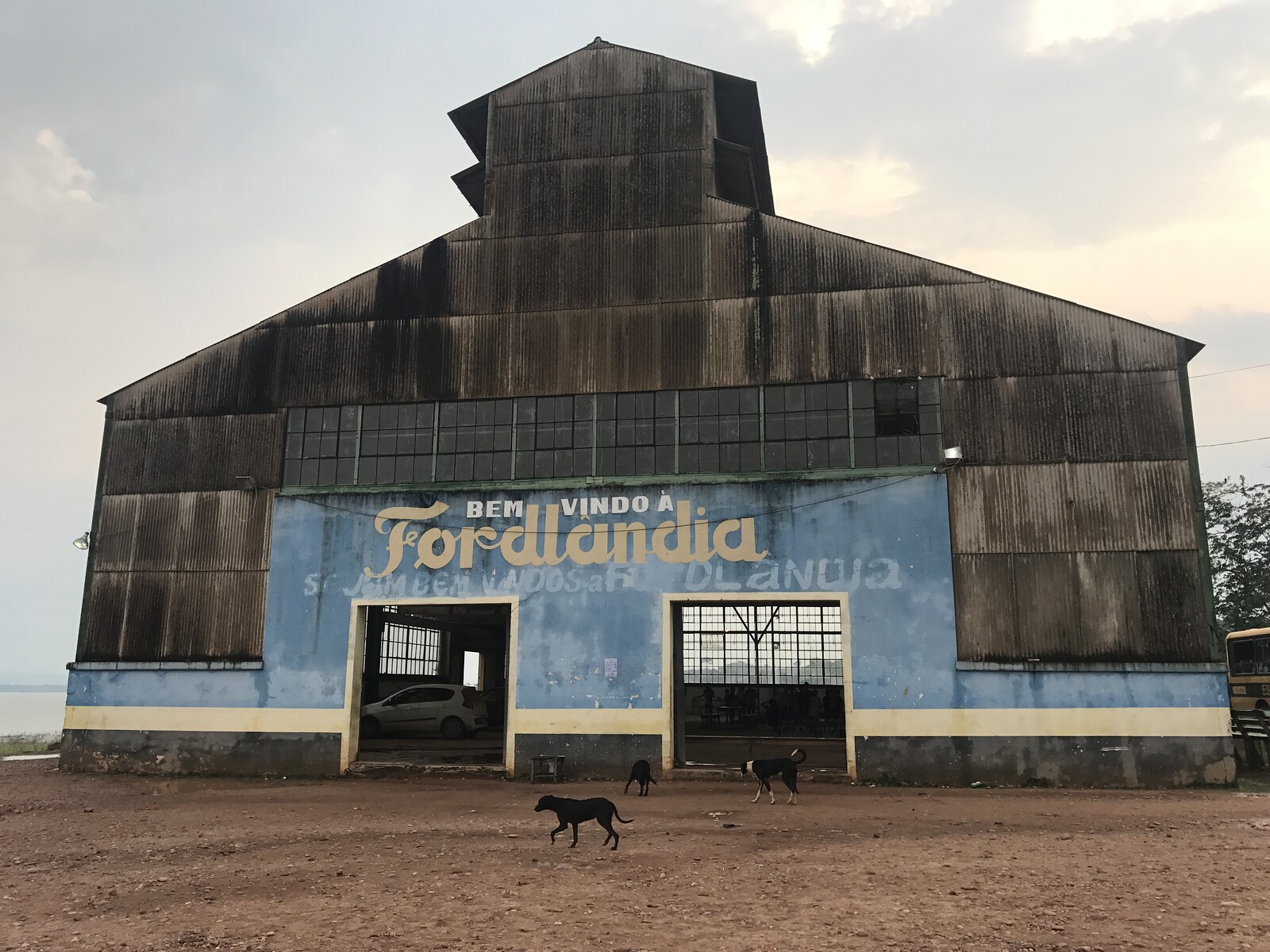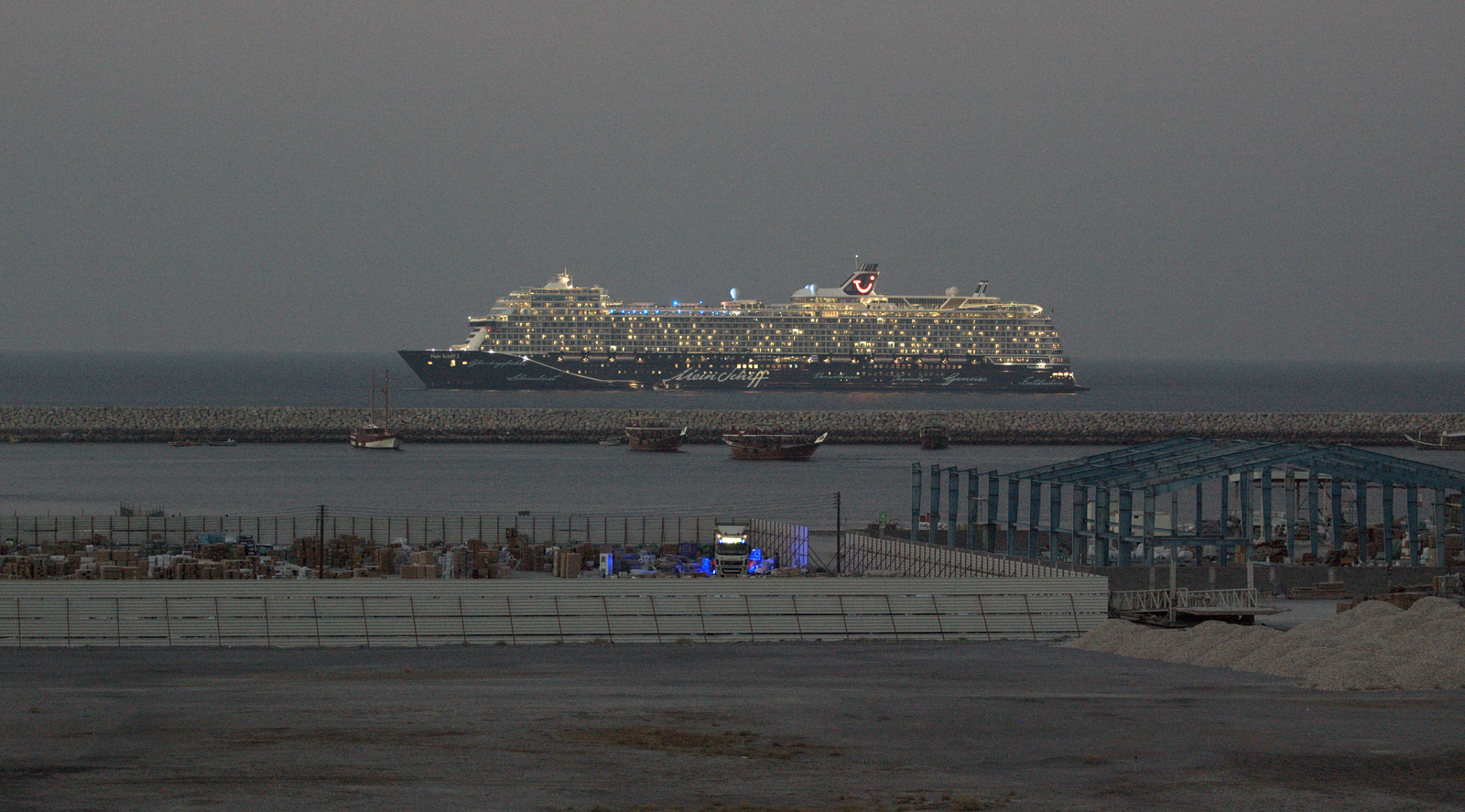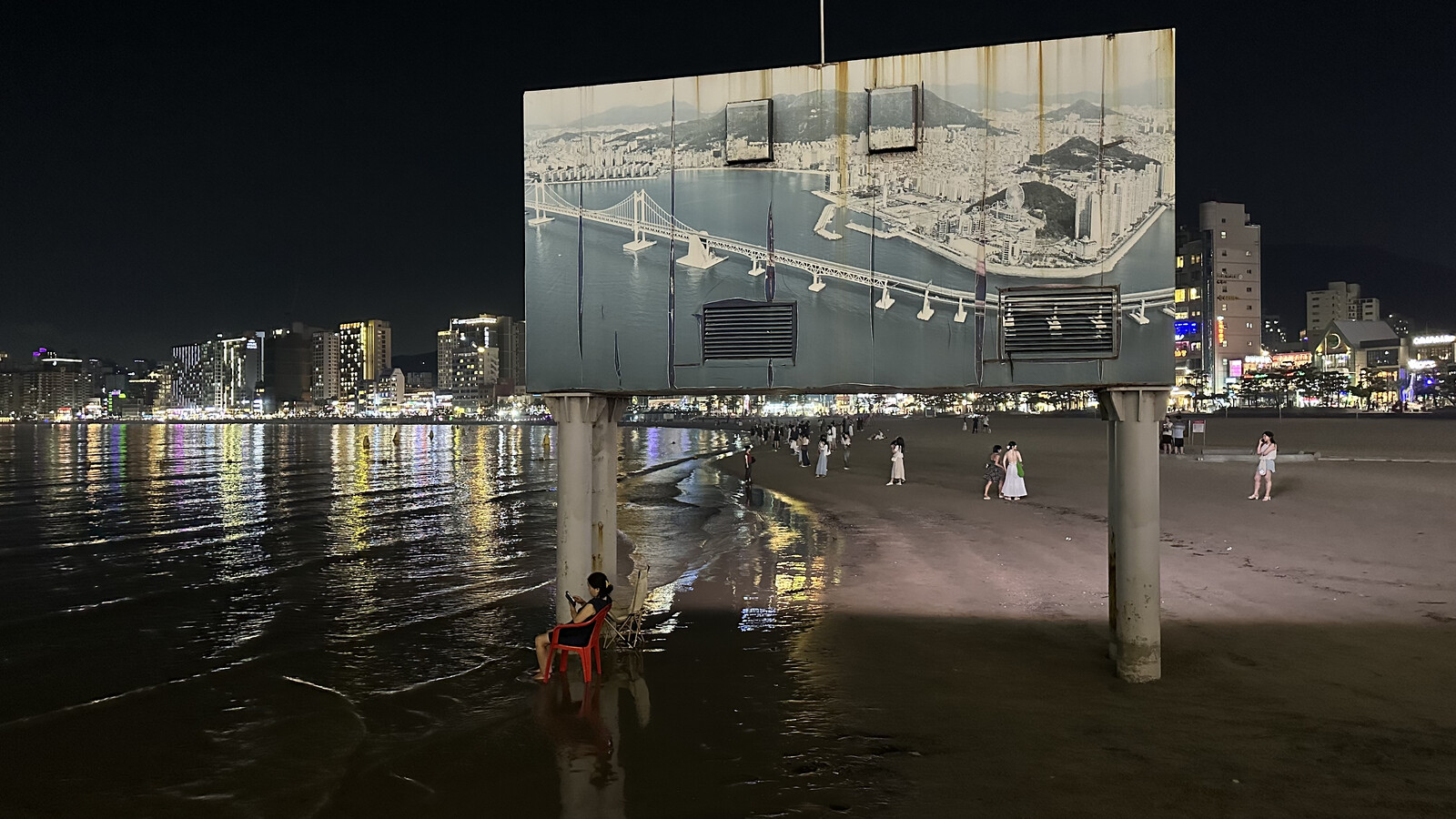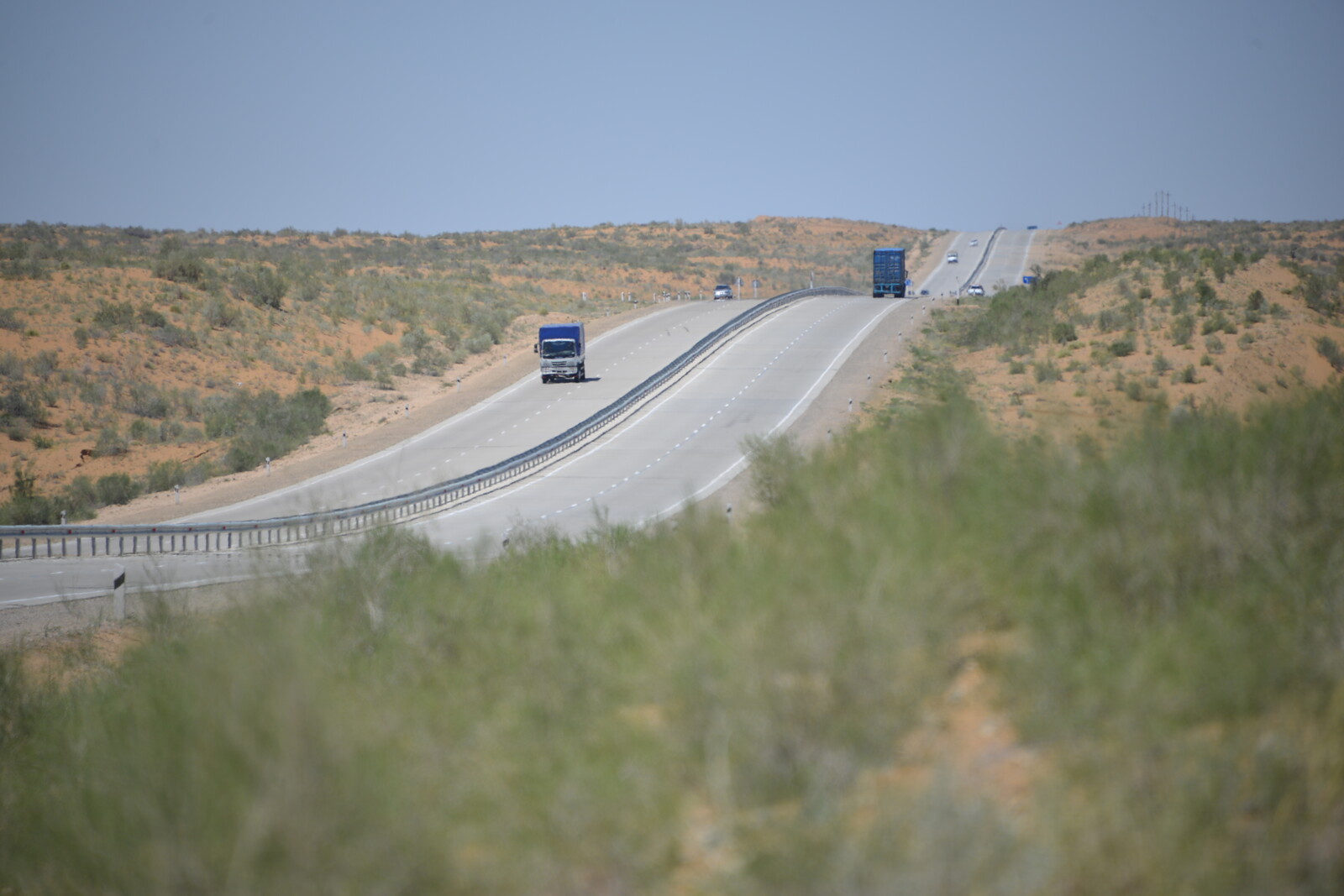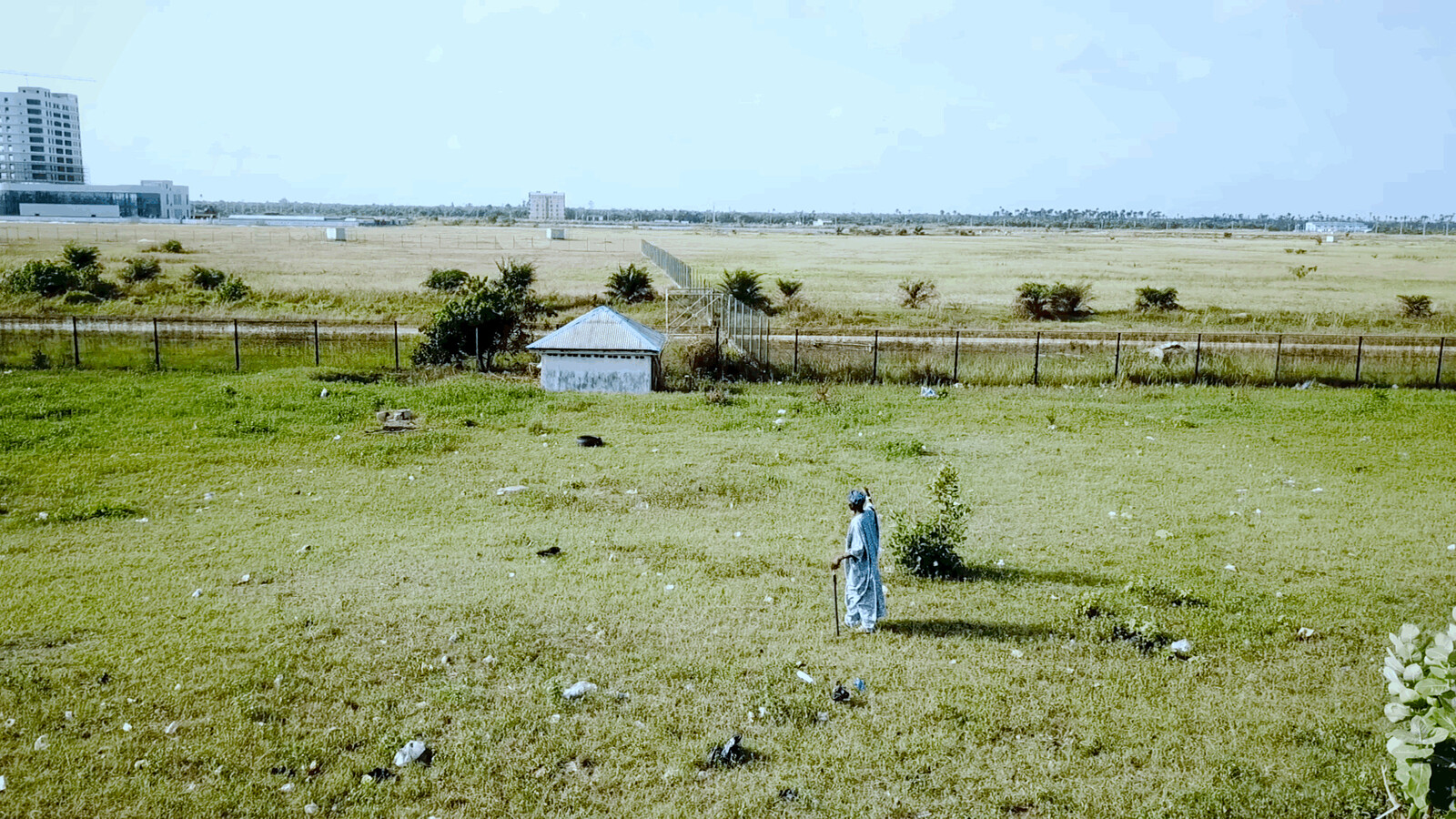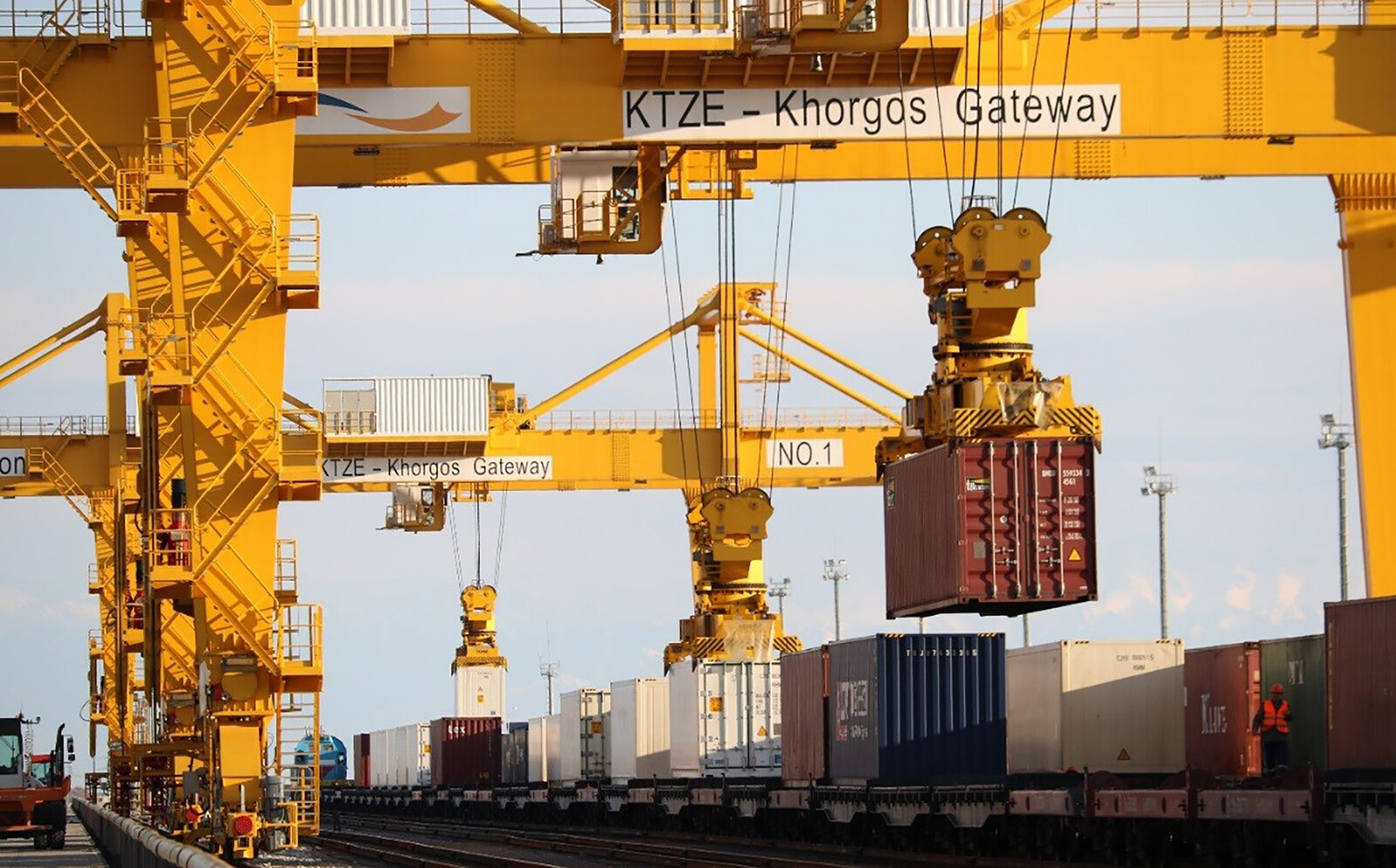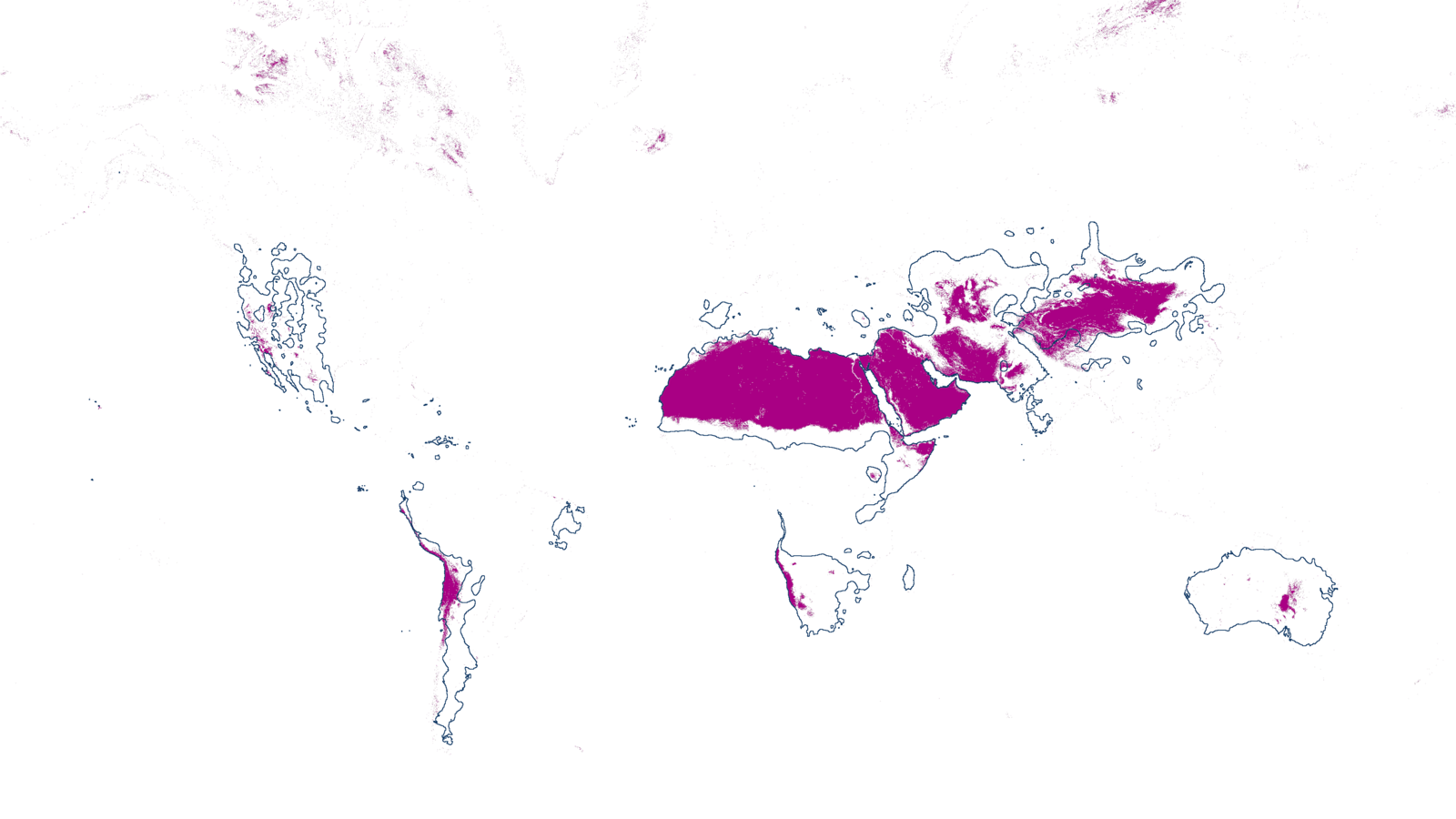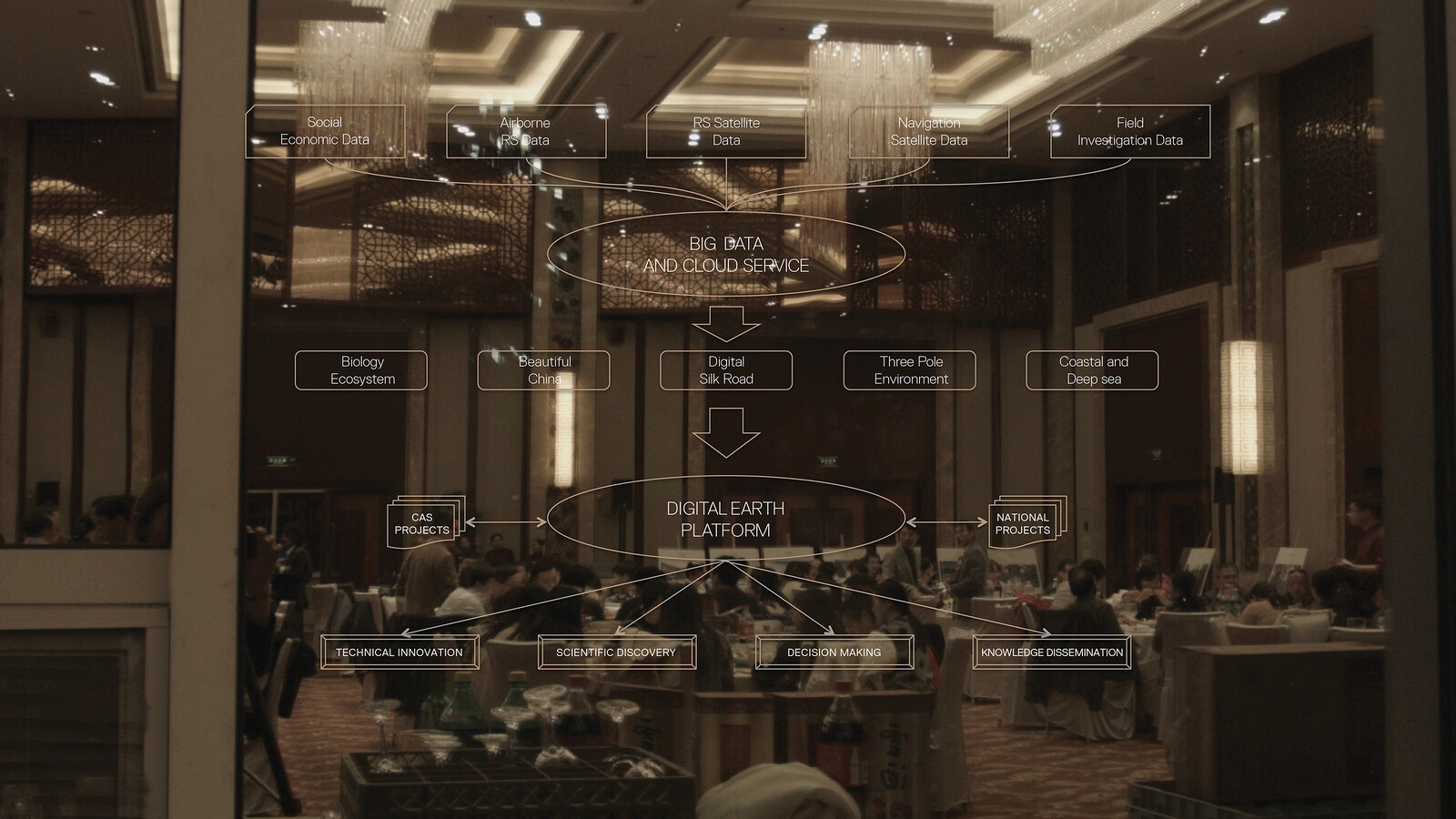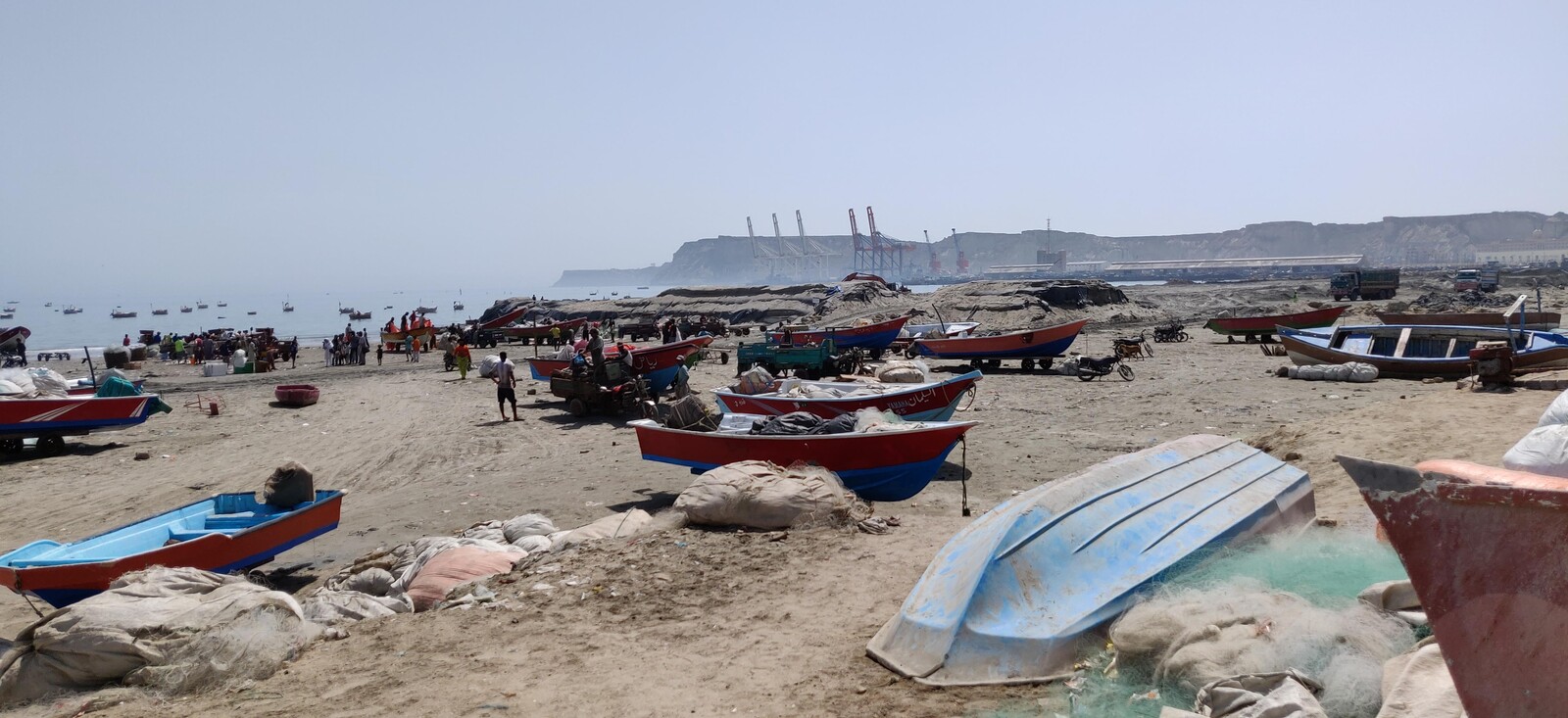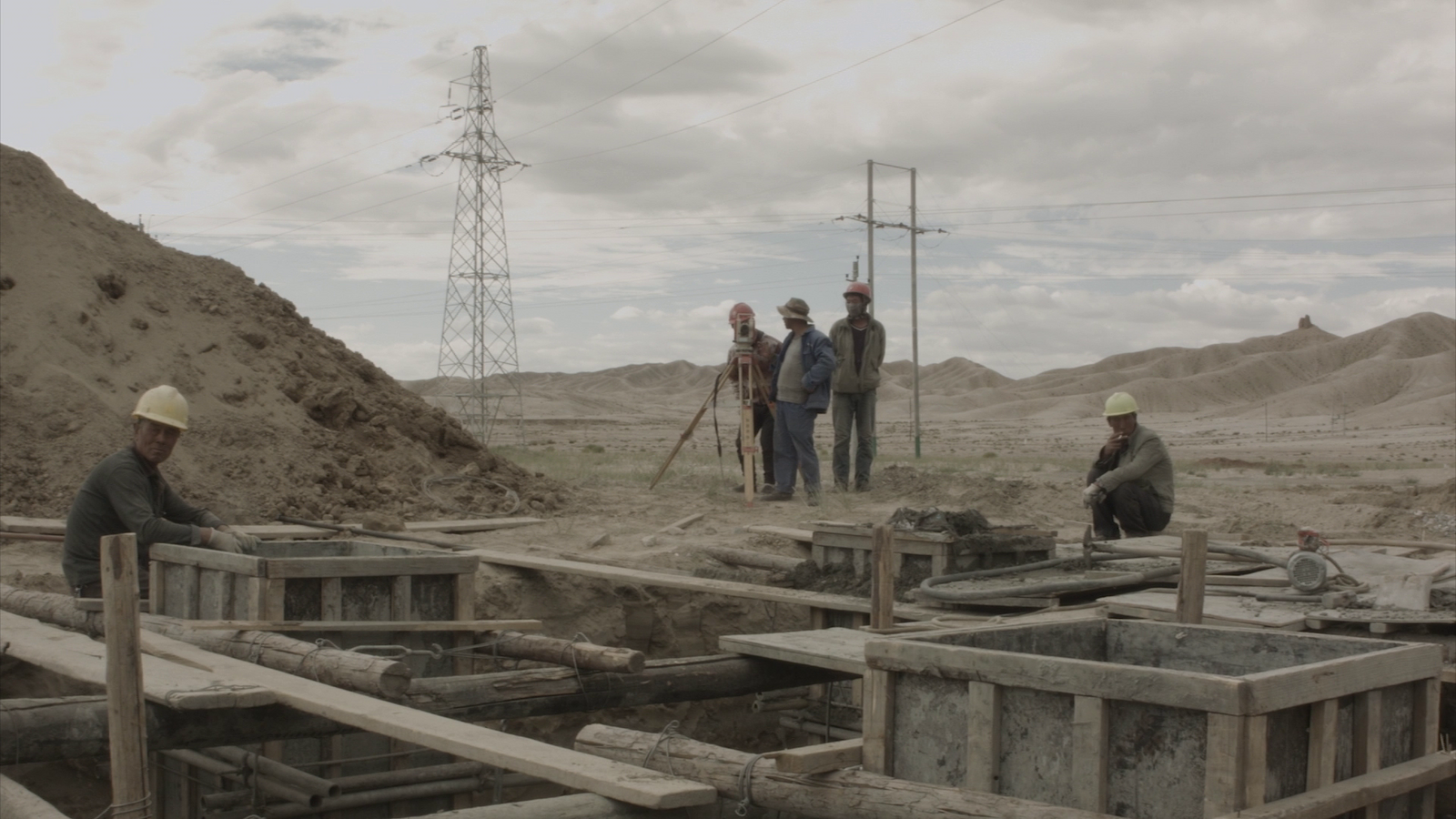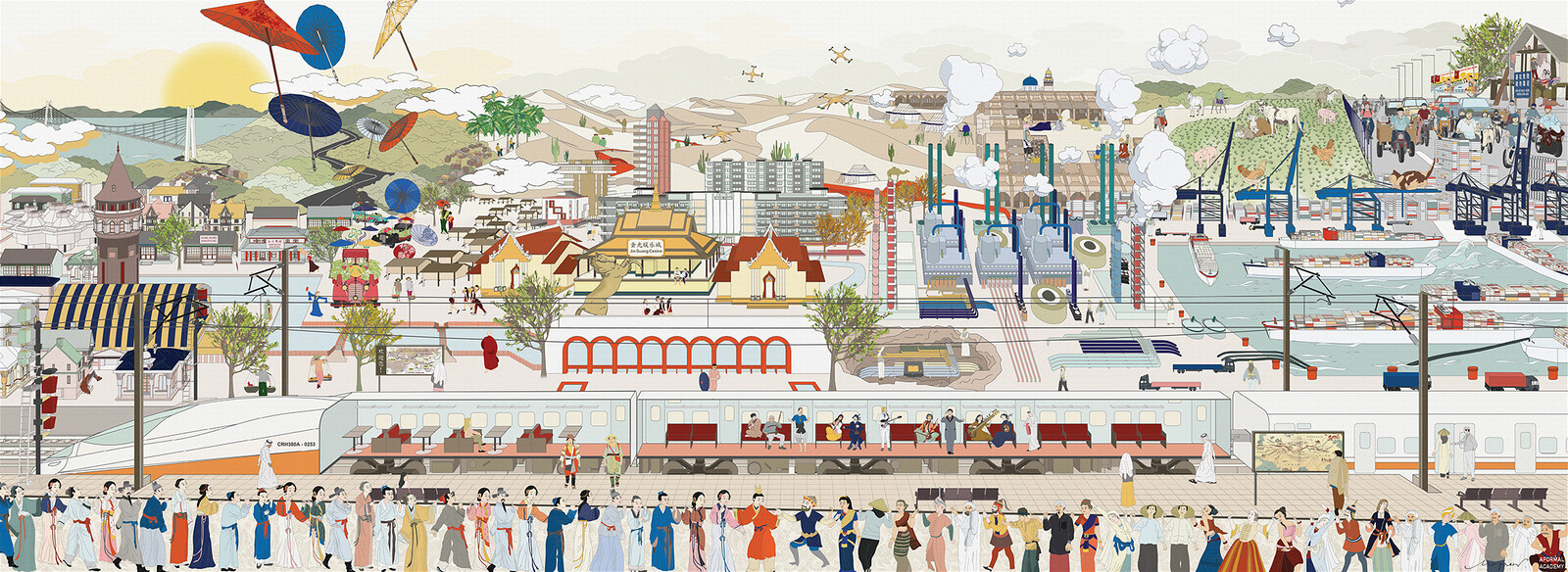Belt and Road is a project in both writing and reading history. To date, international scrutiny has fallen overwhelmingly on the former; how China’s grand ambitions are altering the course of events and the global power landscape of the twenty-first century. But if the Belt and Road Initiative (BRI) is about “reviving” the Silk Roads for the twenty-first century, we might also ask how China now reads the past, and in what ways it appropriates it for strategic ends. Such lines of inquiry help us begin to understand how Belt and Road not only writes, but comes to re-write history, and it is the latter that may hold the greatest long-term impact.
From the very beginning, Beijing has framed Belt and Road as a “revival” of the Silk Roads. But what this means precisely has received little critical attention in the West. Journalists and analysts have noted the Silk Road as little more than a gesture to romantic pasts of trade and exchange, where the camel trails and caravanserai of previous centuries are replaced by transcontinental rail lines and special economic zones. Sailing ships carrying porcelain become the container ships and oil tankers of the twenty-first century. History then is merely a palette of richly evocative imagery through which the old is paralleled by the new to make strategies of connectivity meaningful for audiences around the world. Countless news channels, think tanks, government reports, and academic papers have thus introduced the BRI by casually summarizing the Silk Road in a short sentence or two, and rapidly moving on to the “real” stuff.
But if we look closer, we begin to see that the idea of the “Silk Road”—a concept invented in the late nineteenth century, and which now renders highly selective, stylized depictions of pre-modern globalization—is doing considerable political work in the context of BRI. For much of the twentieth century, the story of the overland Silk Road held little currency as a history of transcontinental connectivity. The creation of the Soviet Union meant Central Asia was closed off to the West, and the politics of history and heritage making across Asia gravitated around building the “imagined communities” of nations and the tying of ethno-cultural identities to territorial domains. Up until the 1990s in the West, the Silk Road remained a vague, enigmatic concept, and rarely received sustained critical attention.
The term “Silk Road” was first coined by the German geologist Ferdinand von Richthofen in 1877 as part of an account of his time spent in northwest China surveying routes for a possible transcontinental train line that would carry coal to a rapidly industrializing Germany.1 A geographer in the broadest sense, Richthofen used the term to describe trade routes between Han dynasty China (206 BCE-220 CE) and the Roman Empire.
In the decades since Richthofen coined the term, notably those years leading up to World War I, other scholars and explorers built on the themes first glimpsed by Richthofen by gathering manuscripts, artefacts, and artworks; evidence of an extensive history of trade in ideas, technologies, goods, and commodities, and of a dialogue across cultures spanning centuries. The Great War, together with the ideological shifts in history created by revolutions in Russia and the creation of the Soviet Union, would curtail such lines of scholarship. Yet the mythology around an enigmatic, exotic Silk Road began to take hold in the public imagination in Europe in the run up to World War II. Its allure centered around ideas of exchange, dialogue, openness, and the enrichment—economic and cultural—that comes from trading across borders and across cultures. Emergent communication technologies of radio and silent film, together with newspapers, magazines such as National Geographic, and autobiographical books brought stories of grand adventure to ever greater audiences in Europe and North America.2 Marco Polo was only then becoming a figure of popular culture, in part thanks to a brief but golden moment of twentieth-century transcontinental adventure—during which motor vehicle expeditions across Asia sponsored by André Citroën, Buick, and Esso—romantically depicting trips that “retraced” the steps of the great thirteenth century traveler and his “route along the Silk Road.”3
The collapse of the Soviet Union and the economic reforms of Deng Xiaoping renewed international interest in the story of the overland Silk Road. For the first time in generations, northwest China, along with the republics of Central Asia, was open to western tourists. For the former Soviet states, newfound sovereignties meant new foreign policies, with governments rebranding themselves as the cultural, political, and physical “crossroads” between Europe and Asia—a discourse that has its roots in the interpretation of manuscripts and artifacts captured by European explorers in Central Asia during the “Great Game” of the late nineteenth century.4
The 1990s also led to a renewed interest around the world in the concept of civilization, albeit in very different ways in different disciplines. The term entered debates in political science and international affairs, primarily through the ideas of Samuel Huntington and his followers. His “clash” thesis framed by the fault lines of culture and religion found its reaffirmation in 9/11. Ulf Hannerz has recently traced the international circulation of such arguments and their refutation to argue the widespread feeling that the world was then entering a new era of complexity, and shifting borders gave unprecedented prominence to culture in the analysis of geopolitics.5 Central Asia had returned to being a critical “pivot” in world affairs, but in revisiting Halford Mackinder’s early twentieth century reading of the region as the “heartland,” analysts now foregrounded transcontinental energy supplies as an infrastructure of national security.6 Others, however, questioned the practice of framing civilizations and cultures as bounded, self-contained entities. The turn towards networks and mobilities facilitated the cultural theorization of cosmopolitanism and hybridity, giving the story of a Silk Road cosmopolitan culture new resonance. Over the 2000s, and in the wake of 9/11, the diplomatic currency of the Silk Road—both as a geocultural and geostrategic concept for foreign policy—continued to grow, with Central Asia once again becoming the “cockpit” of international affairs.7 China, Japan, South Korea, and the United States all conjured up foreign policy strategies for the region around variations of a “new” or “iron” Silk Road.8
China has today taken this use of the Silk Road narrative forward, greatly expanding its significance in international affairs. The Silk Road is a depiction of the past that enables Beijing to frame its foreign policy ambitions within a language of peaceful connectivity and harmonious dialogue, within which culture and history are being used as an emergent form of geocultural power.9 In effect, the Silk Road represents a strategic narrative for this expansive geography of connectivity, which can be creatively appropriated and redirected by Belt and Road partner countries to advance their trade and diplomatic interests. As a new form of cultural power and cooperation, such developments raise a multitude of questions.
For much of the twentieth century, the narrative of the Silk Road lay outside the ideas and discourses influencing historiography. Fields such as archaeology, history, and anthropology have long been enmeshed in the politics of nation building; giving form to the “roots”—whether they be territorial, linguistic, religious, cultural, or genetic—by which contemporary ideas about identity and the nation have been fashioned.10 Yet in contrast to India, Cambodia, Greece, and elsewhere, the archaeology and philology that gave birth to Silk Road studies were not appropriated and deployed to build imagined communities for the modern era. Unlike Asia’s great temples, a history built around manuscripts, silk, and ceramics did not provide the material foundations for European practices of statecraft in Asia and the forms of nationalism that ensued with decolonization.
As countries seek to build diplomatic and economic ties at both the bilateral and multilateral level, what we see today is a history of “routes” gaining new currency and political significance. Organizations such as UNESCO have been supporting the idea of “cultural routes” for some time, but since the launch of the Belt and Road Initiative, a wave of cultural projects themed around connected pasts has formed as multiple countries appropriate Silk Road histories for strategic advantage. China is fast emerging as a major player in heritage diplomacy, wherein it provides funds and expertise in maritime and land-based archaeology, and the conservation of historically significant landscapes and cities. Today, such initiatives are invariably branded as promoting “people to people” contacts, one of the core pillars of Belt and Road. On the back of this, Central Asia is experiencing a boom in interest from the global heritage sector. Certain locations in Uzbekistan, Kazakhstan, Georgia, Nepal, and elsewhere are becoming hubs of cooperation as organizations organize themselves into partnerships to preserve, manage, and develop the material culture and “fragile” landscapes of the Silk Road. Chinese, British, and Japanese universities are now beginning to work alongside teams from the Hermitage and JICA, Japan’s development agency. Other projects are funded by the EU, with coordination provided by a UNESCO office located in Tashkent, Uzbekistan.11
Pinning down the impetus for such forms of international cooperation is a complicated task. Central Asia is once again becoming a priority region for a number of governments in Europe and Asia, leading to renewed commitments in developmental aid. But for such countries, the Silk Road narrative also productively enables cooperation to be nurtured via claims that donor and recipient are culturally and historically conjoined. The legacy of Great Game scholarship, then, is that it symbolically connects Kyrgyzstan, in the so-called “crossroads” of Asia, with Japan in the east and as far as Greece, and thus European civilization, in the west. But this opens up important questions as to whose history and culture is being recognized, and to what end? As state and non-state actors alike co-opt the now familiar Silk Road tropes of peace, friendship, and trust, prestige and legitimacy are bestowed upon them by UNESCO, the World Tourism Organization (UNWTO), and others.
Depicted as the “crossroads” between Europe and Asia in the popular imagination, Central Asia has returned as the liminal zone between two great centers of culture and civilization. This suggests, by implication, that its history and culture emanate from elsewhere and the region is merely a “bridge,” conjoining more historically significant regions, East and West. States have long used museums as a technology to construct archetypal categories of citizenship: national, ethnic, and religious. The cultural sector investments now being made in Central Asia suggest this will continue to be the case going forward. The collapse of the Soviet Union meant each country embarked upon constructing cultural nationalisms that were at once both distinctive and simultaneously spoke to a regional “shared heritage.” This remains an ongoing and precarious task, and a Silk Road narrative driven by a China looking to expand its influence westwards represents a new landscape of cultural politics.
As scholars have recently shown, the depiction of ethnic minorities across heritage sites and in museums in China has been a process where difference has been depoliticized though an aesthetics of diversity.12 This invariably works as a technology of containment, whereby different groups are subsumed into the “peoples” of the nation. It is likely that the cultural corridors of the Silk Road will work as smoothing devices within and across borders, where reductionist ideas of cultural transmission and diffusion, familiar to the nineteenth century, undergird forms of spatial and social governance. In China today, the idea of the Silk Road is deeply connected to the spread of Buddhism, a narrative anchored around the story of Xuanzang and his seventh century travels to India and Central Asia, and the city of Dunhuang and its nearby Mogao caves. This raises the question of whether Silk Road cultural routes fashioned around the transmission of Buddhism will inflict new forms of social and cultural violence on populations, including Muslim minority groups, whose culture, language, and religious practices have been under threat for some decades. A Silk Road history, articulated through a language of cultural routes, thus demands we ask both new and familiar questions about the political work heritage is doing.
In an era of Belt and Road, the idea of creating and mobilizing the Silk Road as heritage is being driven primarily by one country, albeit with multiple others buying in for economic and strategic purposes. Crucially, the Silk Road departs from many of the existing discourses of history and heritage that prevailed across Asia over the course of the twentieth century. Seemingly devoid of any nationalist, ethnic, or religious undertones, it circulates as a benign vision of history. Even when cast in its romanticized forms, it seems to have escaped the now familiar critiques of orientalism and cultural imperialism. Instead, it has come to be associated in both academia and international policy with notions of peace, harmony, trust, and dialogue. The unfolding geopolitical implications of the Belt and Road Initiative, and the accumulation of state power across the region through multi-sector connectivities, demand that we take a more critical path along the routes of the new Silk Road histories now being written.
See Daniel Waugh, “Richthofen’s ‘Silk Roads’: Towards the archaeology of a concept,” The Silk Road 5 (Summer 2007): 1–8; and Tamara Chin, “The Invention of the Silk Road, 1877,” Critical Inquiry 40 (Autumn 2013): 194–219.
See Tim Winter, Geocultural Power: China’s quest to revive the Silk Roads for the twenty-first century (Chicago: University of Chicago Press, 2019).
See for example, Lawrence Thaw and Margaret Thaw, “Along the Old Silk Routes,” National Geographic 78, 1940.
“The Great Game,” Wikipedia Foundation, last modified Janurary 18, 2020, ➝.
See Ulf Hannerz, “Geocultural Scenarios,” in Frontiers of Sociology, ed., Peter Hedstrom and Bjorn Wittrock (Leiden: BRILL, 2009), 267–288.
In 1904, Halford Mackinder famously spoke of The Geographical Pivot of History, wherein he cited Russia’s territorial control across Asia as evidence of an historic shift away from the sea towards land-based forms of power. His theory of the “pivot” mapped out a vast area reaching down from the Arctic incorporating the Iranian plateau, Tibet, Afghanistan, Mongolia, Xinjiang and Russian territory, beyond which lay two “crescents.” Mackinder subsequently revised his thesis, renaming the pivot as the “Heartland,” refining the argument into an aphorism that would captivate analysts and politicians for decades to come: “Who rules East Europe commands the Heartland; who rules the Heartland commands the World-Island; who rules the World-Island commands the world.” See Halford J. Mackinder, “The Geographical Pivot of History,” The Geographical Journal 23, no. 4 (1904): 421–37.
See for example, Ramakrushna Pradhan, “The Rise of China in Central Asia: The New Silk Road Diplomacy,” Fudan Journal of Humanities and Social Sciences 11 (2018): 9–29.
Marlene Laruelle, “The US Silk Road: Geopolitical imaginary or the repackaging of strategic interests?,” Eurasian Geography and Economics 56, no. 4 (2015): 360–75.
See Winter, Geocultural Power.
See Tim Winter, “Heritage and Nationalism: An Unbreachable Couple?,” in The Palgrave Handbook of Contemporary Heritage Research, ed., Steve Watson and Emma Waterton (London: Palgrave Macmillan, 2015), 331–45.
See for example, “Japan Funds-in-Trust Silk Road Project,” Events, UNESCO, ➝; “Digitising Endangered Archaeological Heritage in Central Asia,” UCL School of Archaeology, February 18, 2019, ➝; Wang Kaihao, “Archaeologists Dig Deep on Overseas Project,” China Daily, January 9, 2019, ➝; “UNESCO Partners with the European Union to Invest in Creativity for Development,” UNESCO, September 3, 2018, ➝; and “Saving Cultural Heritage in Uzbekistan,” Delegation of the European Union to Uzbekistan, December 11, 2018 ➝.
See Tracey Lie Dan Lu, Museums in China: Materialized power and objectified Identities (London: Routledge, 2014); Marzia Varutti, Museums in China: The politics of representation after Mao (Woodbridge: Boydell and Brewer, 2014); and Robert Shepherd, “UNESCO and the Politics of Cultural Heritage in Tibet,” Journal of Contemporary Asia 25, no. 2 (2006): 243–57.
New Silk Roads is a project by e-flux Architecture in collaboration with the Critical Media Lab at the Basel Academy of Art and Design FHNW and Noema Magazine (2024), and Aformal Academy with the support of Design Trust and Digital Earth (2020).
